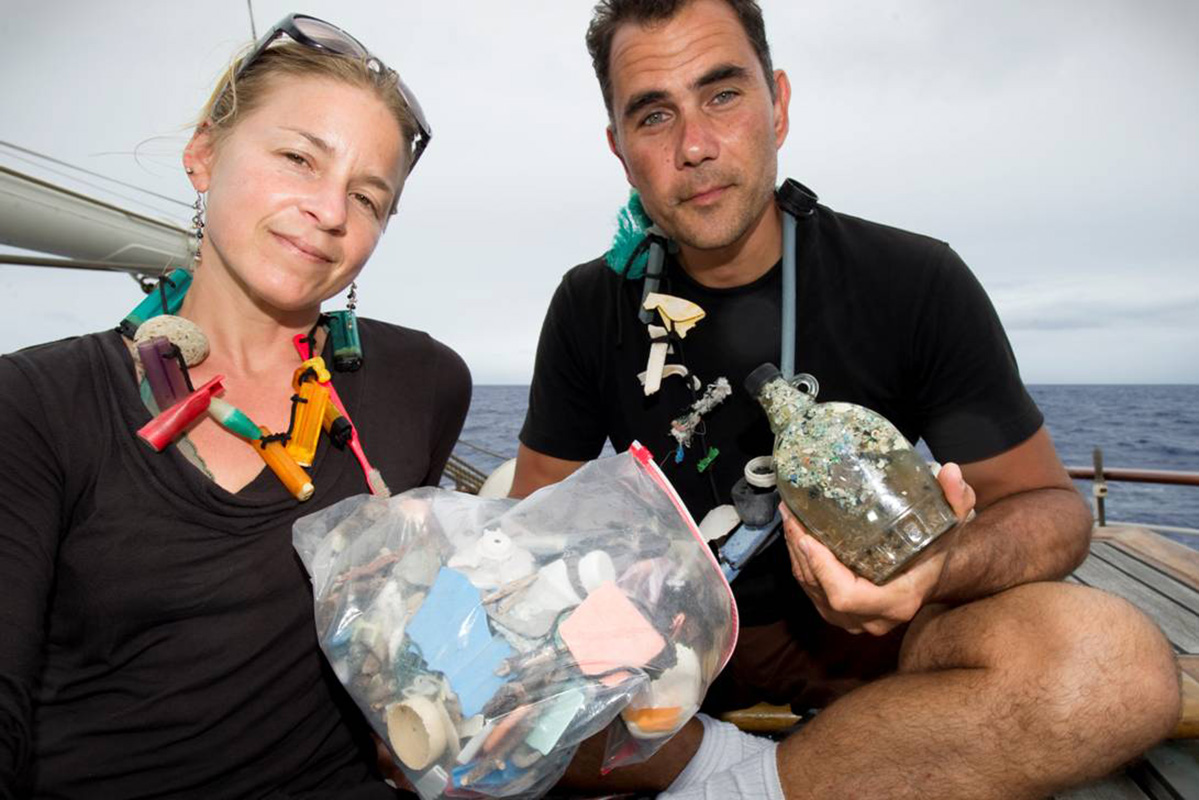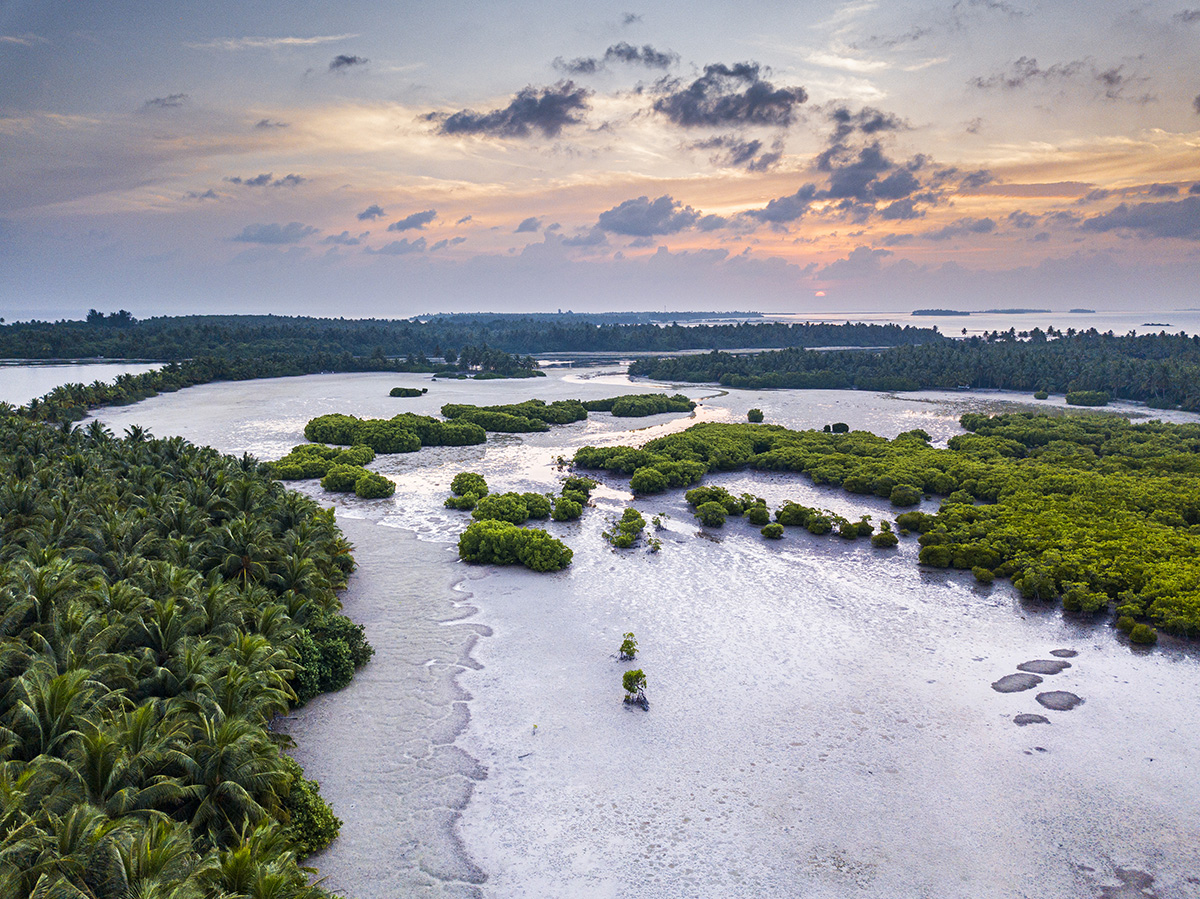
Marcus Eriksen is at the cutting edge of research and raising awareness about the interaction between natural ocean phenomena with microplastic pollution. Trudy Ross speaks with him about the issues, challenges and possible solutions.
LUX: What inspired you to start 5 Gyres and dedicate your work to addressing plastic pollution in our oceans?
Markus Eriksen: In 2003, I made good on a promise to myself to one day raft the Mississippi river. I grew up near the river, and always dreamed of doing that, but when I did, I saw an unending trail of plastic pollution, flowing down America’s greatest watershed out to sea. Within a month of returning from the river, I landed a job working with Captain Charles Moore, the man who discovered the great Pacific garbage patch. Three years later, I proposed to my wife Anna Cummins while we were aboard Captain Moore’s research vessel in the middle of the north pacific garbage patch. From there, Anna and I began the 5 Gyres Institute with the goal of researching the world’s oceans to answer some big questions. How much trash is in the global ocean, where is it accumulating, what is the impact on other living things, and what can we do about it?
LUX: Could you explain what gyres are and how they relate to the issue of plastic pollution?
ME: Oceanic Gyres are normal features of the ocean defined by large-scale circulating currents. There are 11 oceanic gyres, with five of them being the subtropical gyres. That’s where floating plastic trash accumulates. The currents are driven by wind, and in the northern hemisphere they rotate clockwise, while in the southern hemisphere they rotate counterclockwise. The subtropical gyres create high-pressure systems in the middle, where the wind and waves slow down and trash accumulates. Those are what we call the garbage patches, but I would call them a Plastic Smog instead.
LUX: You have done an enormous amount of work combating the use of microbeads. Can you tell us more about this and why it is such a crucial part of your mission?
ME: In 2012, I worked with a colleague, Sherri Mason, to document floating plastics in the great lakes. What we found were abundant microbeads, which was the first evidence of microbeads documented in aquatic habitats. The publish paper became the foundation for a national campaign to rid consumer products of microbeads. We work with dozens of organizations, sharing videos, photos and press releases. We worked with Tulane law school in New Orleans to produce sample federal legislation to ban microbeads. Soon we got two senators to put a federal bill in front of President Obama, which he signed into law the 2015 Microbead-free Waters Act. We went from science to a policy solution in two years. This provided a great example for everyone worldwide about how powerful we can be when we work together toward a single goal. That successful campaign still gets referenced today as we work to eliminate single-use plastics everywhere.
LUX: You recently published a study revealing a global estimate for plastic in the oceans. How did you go about conducting this research and what did you find?
ME: We published this study in early April that identified 170 trillion particles of microplastics in the global ocean. It was a 40 year trend analysis which showed an exponential increase of plastic in the ocean since 2005. This is largely due to the fragmentation of new and older plastic items, the introduction of over 5,000,000,000 tons of new plastic in the last 15 years, And an unfortunate trend in very weak international policies to address the problem. The most recent policies of the last few decades have been voluntary and focused on recycling and Cleanup. Policies back in the 70s and 80s were more preventative in nature and they were legally binding. Right now we are working hard to ensure that the current debate about the UN global treaty on plastic kind pollution is about prevention and will be legally binding. We can’t have a weak international treaty.
To answer your question about how we did this research, we combined all of our data of sea surface sampling over the last decade with every other publicly available data on the planet. We then used our oceanographic models to extrapolate the data to the broader ocean environment. This gave us plastic particle abundance estimates per ocean basin, and collectively the whole planet.
Each data point is collected by dragging a net across the ocean surface for a specific distance, using a net with a known width. That gives you a particle count per unit area. That becomes the data that we used to feed our ocean graphic models. The fun part is that we get to sail around the world to collect this data.
Follow LUX on Instagram: luxthemagazine
LUX: How can we ensure we are holding companies and producers responsible for their contribution to the problem?
ME: This gets very tricky. We need smart international policies that are preventative in nature, and embrace something called extended producer responsibility (EPR). EPR is about holding product and packaging manufacturers, responsible for the entire lifecycle of what they make. That means setting design standards so that items are easily dismantled and easily recyclable, and it also means keeping Plastic out of packaging as much as possible.
One big part of EPR is ensuring that manufacturers are using recycled plastic when they do. Right now recycling fails worldwide because manufacturers are not obligated to use recycled materials. Because virgin plastic is so cheap, no one buys recycled plastic in huge volumes. This is why recycling United States covers at less than 10%. It’s a system that is not set up for economic success. While corporations like to boast about the technical recyclability of what they make, they avoid discussion of the economic reality of making a recycling successful. To solve this problem, we would need smart legislation that requires a high percent of post – consumer recycle plastic used in all new products.
LUX: What does it mean for a plastic to be biodegradable? If I buy food in biodegradable plastic packaging, am I still contributing to the problem?
ME: Yes and no. The issue of bioplastics has become quite confusing, with some false advertising and misleading uses of terminology. First, bio-based and biodegradable packaging are very different materials. Bio-based simply means you are taking modern plants to make conventional plastics, like polyethylene and polypropylene, instead of using fossil fuels. It’s the same stuff. Biodegradable plastics are very different, but the word biodegradable means different things for different people.
Polylactic acid, or PLA, is a common form of biodegradable plastic, and has been advertised to be biodegradable by many packaging manufacturers. Most of the time it is labeled as compostable, but in the fine print states that it’s only compostable in an industrial composting facility, not in your backyard or on the side of the road. But in reality, industrial composting facilities are now rejecting PLA, because your it is not biodegrade in a meaningful time frame. Industrial composting facilities, make their money from selling compost, and PLA contaminates their compost. Unfortunately, industrial composting facilities are now rejecting every type of biodegradable plastic on the market, but things have changed.
There is a novel type of biodegradable plastic called PHA and PHB, which actually do degrade quickly, but only if they are in a thin film form. This is important because in our research we have found that thick items, like the handle on a biodegradable plastic fork, can stick around for more than a year. But, a thin film made from PHA or PHB will degrade in a couple of months in a rich composting environment.
In our recent study, we put 22 different products made from biodegradable materials into six different settings and tested their degradation over a year and a half. We were really impressed with some of the new thin film packaging that’s available.
LUX: Can you tell us about your TrashBlitz project and what you are hoping this will achieve?
ME: Trash blitz is a program that works with cities to survey their entire region to get a good idea of what kind of plastic packaging are the biggest pollutants. We give the cities the data, put together in a nice report, which they can use to present to their city Council or local plastic manufacturers. That data allows them to address plastic pollution locally. We’ve done this in many cities, like Denver, Colorado, and Austin, Texas, and most recently we did this in national parks. In each case we provide the data they can use.
Interestingly, we find that most cities have the same list of top 10 types of packaging that are the biggest polluters, like cigarette butts, bags, straws, cup, lids, bottle caps, etc.…. We hope that this bigger picture view of the biggest polluters can affect national legislative policies to illuminate single use plastics.

LUX: You mention having a solution-based approach at 5 Gyres. What are the most important solutions to plastic pollution we need to be looking at as a society right now?
ME: We favor smart legislative policies. What seems to always work is when the private sector and political leadership work together on preventative solutions. This might mean getting rid of single-use plastics, like the way school districts are getting rid of Styrofoam trays in their cafeterias. We’re also seeing cities eliminate plastic straws, plastic bags, and cutlery from local restaurants.
We also favor innovators and entrepreneurs that discover new materials, new ways of designing products and packaging without plastic, and novel business practices that show how a reuse economy can work. There are some interesting new Bioplastic materials that I think can be a replacement for many thin film applications. We are also seeing some novel, business practices, like the company “Vessel” that provides stainless steel coffee mugs and beer cups that a city can circulate through different restaurants in coffee shops.
LUX: You have said that you are hopeful that plastic pollution is a problem we can solve. Do you ever find yourself losing hope or being disheartened working on these issues?
ME: Overall, I am more optimistic pessimistic, because I meet so many young, innovators and entrepreneurs. They’re trying to make solutions work.
I feel pessimistic sometimes when I see how much effort the polluters put into fighting legislation and resisting changing their packaging, products and business models. They are happy to saddle cities with the cost of managing wasteful forms of packaging. They will spend many millions on consultants, lobbyist, and PR campaigns to unravel the work of the many nonprofits trying to find solutions.
LUX: Will we ever live in a plastic free world?
ME: We will, if we want to. What I know is that the plastic out in the world today will likely be buried and become a permanent fixture of the geologic record. If we can focus on stopping to add more plastic trash to the world, then nature will in time bury at all.
We may never be a plastic, free world, because the material is useful in many applications. It’s used in many industries, technologies, makes cars and airplanes, more lightweight and efficient, but it is the single-used plastic problem that we need to address right away.
https://www.marcuseriksen.com/education
Online Editor: Isabel Phillips






























Recent Comments